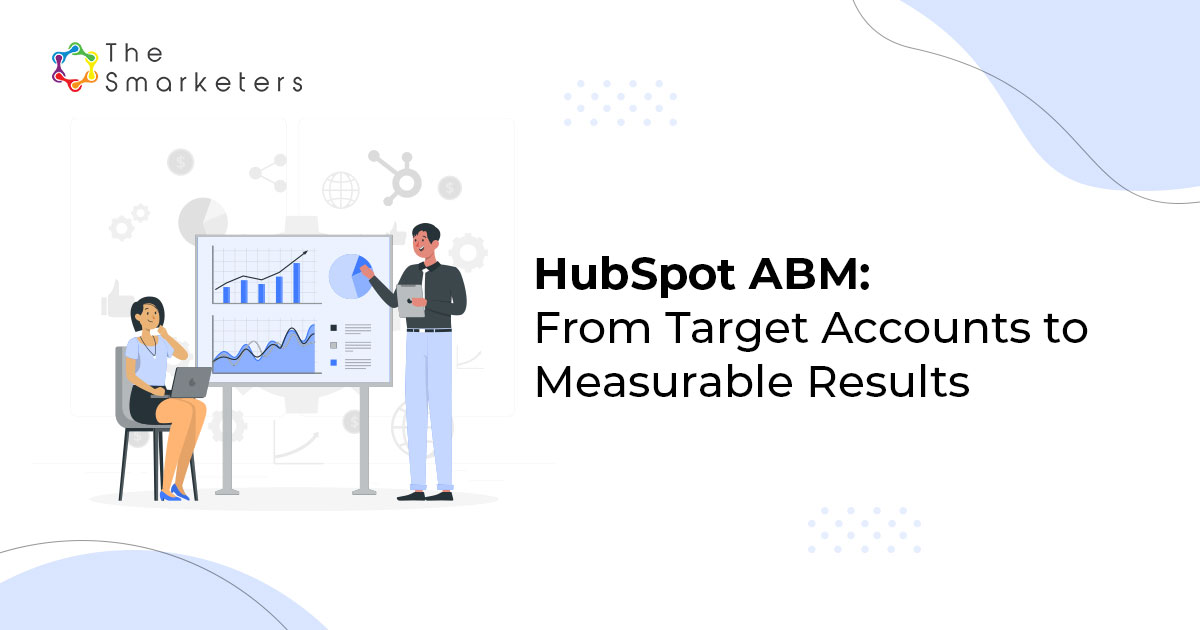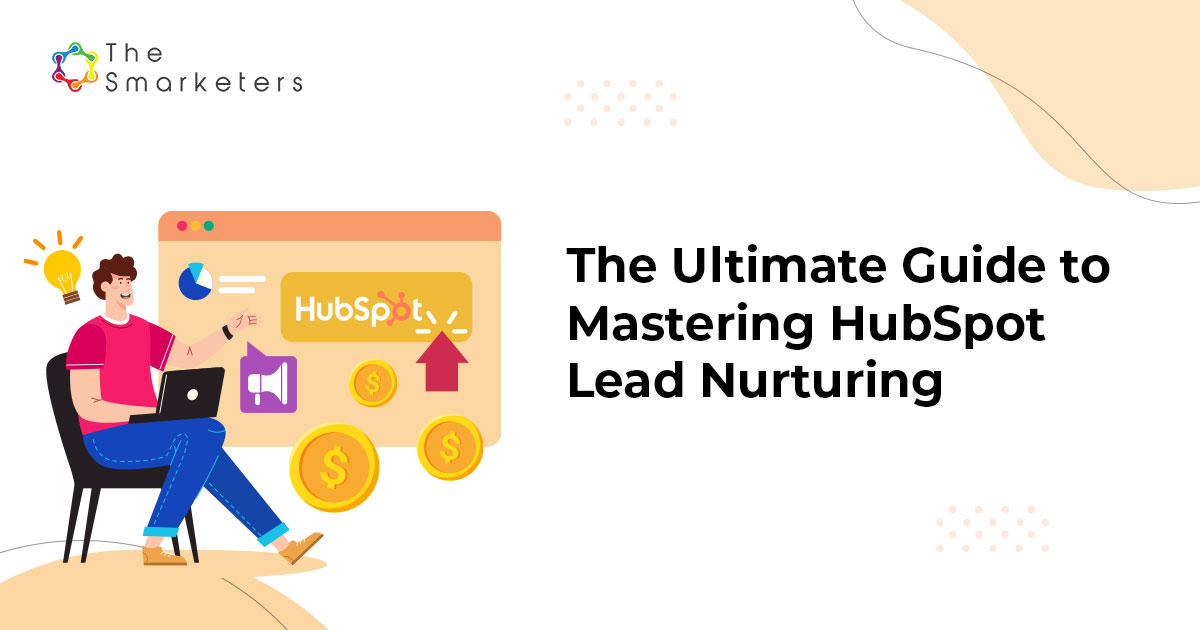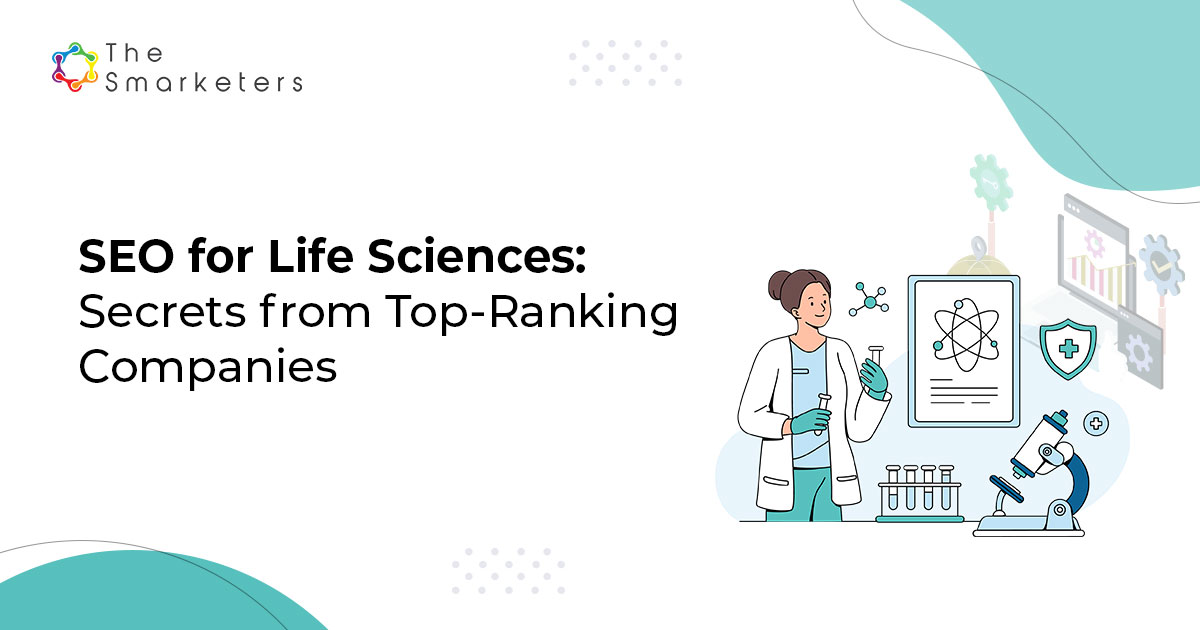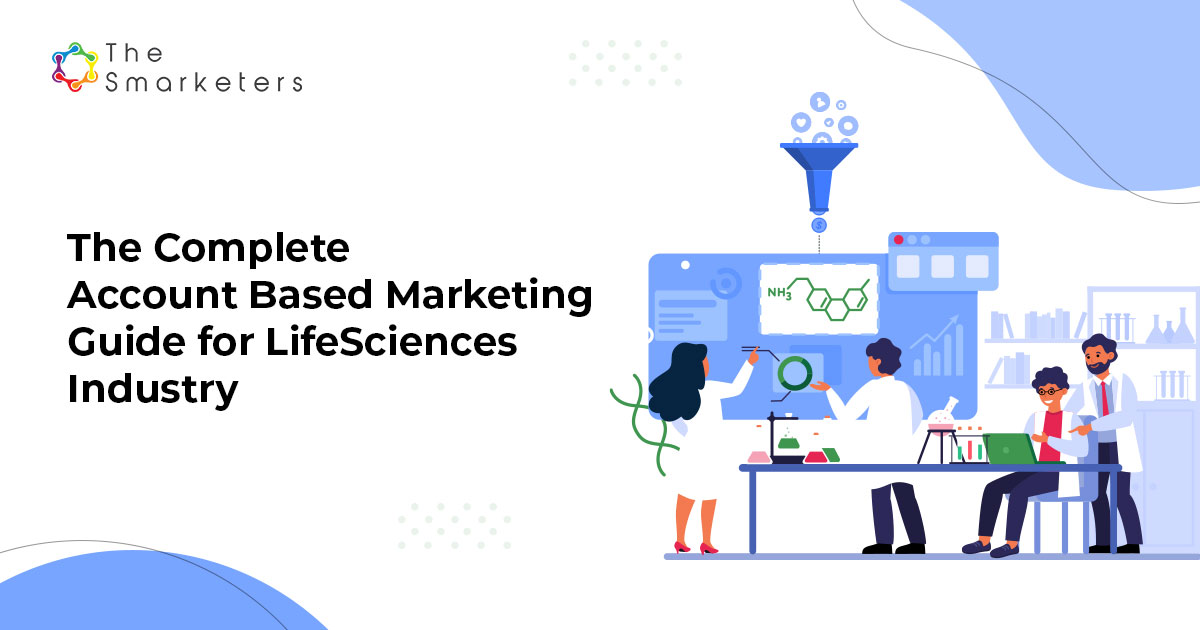As the manufacturing sector evolves to meet changing consumer demands, companies are constantly seeking new and effective ways to market their products and services. One method that has gained popularity is account-based marketing (ABM), a targeted strategy that prioritizes high-value accounts over mass marketing efforts. This approach is especially valuable for the manufacturing industry, where reaching decision-makers and understanding their individual needs is crucial.
In this article, we will delve into the role of ABM in the manufacturing sector and its ability to drive sales and foster lasting, positive relationships with key accounts.
What is Account-based Marketing?
ABM is a targeted marketing strategy that focuses on specific, high-value accounts rather than targeting a wider audience through mass marketing efforts. To drive sales and build long-term relationships, ABM aims to create personalized, relevant experiences for key decision-makers at target accounts.
Each targeted account is typically provided with a customized marketing plan, including personalized content, targeted advertising, events, and direct mail. To ensure a seamless and coordinated approach to engaging with target accounts, ABM campaigns often involve cross-functional collaboration between sales, marketing, and customer success teams.
It is particularly effective in B2B industries like manufacturing, where complex purchasing decisions and long sales cycles are common. By focusing on a smaller number of high-value accounts, companies can create more personalized and effective marketing efforts that are better suited to the needs and interests of key decision-makers at those accounts.
How Manufacturing Benefits from ABM
Manufacturing can benefit from Account-based marketing in several ways:
- By focusing marketing efforts on specific, high-value accounts, manufacturing companies can more efficiently use their resources.
- ABM typically results in higher conversion rates and larger average deal sizes, resulting in a better return on marketing investment.
- Building stronger, long-term relationships with customers: Manufacturing companies are able to build stronger, long-term relationships with customers by creating personalized, relevant marketing experiences.
- To build a successful ABM campaign, manufacturers must foster collaboration between sales, marketing, and customer success teams, which can help improve communication and coordination across departments.
- Manufacturing companies can gain greater visibility and awareness at target accounts through ABM campaigns.
- Manufacturing companies can create more effective marketing campaigns by focusing on specific accounts and understanding the needs and interests of their target customers.
Creating an Effective ABM Strategy for Manufacturers
Step 1: Identify Target Accounts
Before launching an Account-based marketing campaign, you need to identify the high-value accounts you want to target. Unlike broad-based marketing strategies, ABM is laser-focused. Use data analytics to look at existing customers’ lifetime value, potential for future business, strategic importance, and any other criteria relevant to your industry.
Step 2: Build a Cross-Functional Team
ABM is most effective when it’s a collaborative effort involving sales, marketing, and customer success teams. Create a cross-functional team that will communicate regularly and share insights about target accounts.
Step 3: Research Target Accounts
Understanding the pain points, business needs, and decision-making processes of your target accounts is crucial for ABM success. Use both quantitative and qualitative research methods to gather this information. This might include interviews, surveys, or studying publicly available financial reports.
Step 4: Create Personalized Content
Based on your research, create content that speaks directly to each account’s specific needs and challenges. This could be anything from customized white papers, webinars, or even personalized videos aimed at solving specific problems.
Step 5: Choose the Appropriate Channels
Not all accounts consume content the same way. While some may prefer email communication, others might be more active on professional social networks like LinkedIn. Choose the channels that are most effective for reaching your target accounts.
Step 6: Execute the Campaign
Once everything is set up, launch your ABM campaign. Keep in mind that ABM is not a “set it and forget it” strategy. Continuously monitor key performance indicators (KPIs) like engagement rates, click-through rates, and return on investment (ROI).
Step 7: Enable Sales Teams
Provide your sales team with the tools and data they need to have meaningful conversations with target accounts. This includes personalized talking points, information on whom to contact within the organization, and other data that can make their outreach more effective.
Step 8: Measure and Optimize
ABM requires ongoing measurement and optimization. Collect data on how well your strategies are performing and make any necessary adjustments. This might include refining your messaging, focusing on different decision-makers within an account, or even reconsidering which accounts to target.
Step 9: Post-Sale Engagement
ABM doesn’t end with a closed deal. Continue to engage with the account to nurture a long-term relationship. Use post-sale marketing activities like customer onboarding webinars, regular check-ins, and feedback sessions to ensure customer satisfaction and pave the way for upsells or renewals.
Technology and Data in ABM for Manufacturing
In today’s digital age, the success of Account-based marketing is heavily reliant on the effective use of technology and data analytics. Leveraging these tools allows you to identify the right accounts, engage them through personalized experiences, and measure the results of your campaigns accurately.
Data Collection Tools
- CRM Systems: A Customer Relationship Management (CRM) system is crucial for maintaining organized, updated information on each account. CRMs can help you track interactions, customer behavior, and business opportunities.
- Marketing Automation Platforms: These platforms can help automate repetitive tasks and allow you to focus on creating high-quality, personalized content. Systems like HubSpot or Marketo are popular choices.
- Data Analytics Platforms: Google Analytics, Adobe Analytics, or specialized B2B analytics platforms can provide insights into user behavior, content effectiveness, and more.
Key Data Points to Monitor
- Engagement Metrics: These may include page views, time spent on your website, or interaction with your digital resources.
- Conversion Metrics: Track how many targeted accounts moved down the sales funnel and took the desired action—be it downloading a white paper, signing up for a webinar, or making a purchase.
- Customer Satisfaction Metrics: Post-sales metrics like Net Promoter Score (NPS) can provide valuable insights into customer satisfaction and areas for improvement.
Data-driven Personalization
- Behavioral Data: Use data on how target accounts interact with your website or products to create personalized content and messaging.
- Descriptive Data: Utilize firmographic and technographic data for more customized targeting. This might include industry-specific challenges, recent business changes, or the technology stack used by the account.
Integration of Data Across Teams
- Data Sharing: Ensure that data is accessible to sales, marketing, and customer success teams. This ensures a cohesive approach to account targeting and management.
- Feedback Loop: Constantly update the data points and insights based on interactions of sales and customer success teams with the accounts.
Measuring the Success of ABM in Manufacturing
Account-Based Marketing is an investment, often involving multiple departments and resources. As such, it’s crucial to have well-defined metrics that can demonstrate the value and efficacy of your ABM campaigns. Effective measurement not only justifies the spend but also helps optimize future campaigns for better results.
Setting KPIs (Key Performance Indicators)
Before launching your ABM campaign, it’s essential to set clear KPIs that align with your overall business goals. KPIs can vary based on what you’re looking to achieve—be it brand awareness, customer retention, or direct sales. Common KPIs for ABM in manufacturing might include:
- Account Engagement
- Conversion Rate
- Customer Lifetime Value (CLV)
- ROI (Return on Investment)
Tools for Measurement
To accurately measure the success of your ABM strategy, you’ll need a range of analytics tools that can provide comprehensive data. These might include:
- CRM Systems: For tracking customer interactions and engagement.
- Analytics Platforms: Such as Google Analytics for web engagement metrics.
- ABM Platforms: Specialized platforms that can provide detailed account-level analytics.
Types of Metrics to Measure
1. Account Engagement Metrics: These will help you understand how engaged your target accounts are with your content and offerings. Look at metrics like:
- Time Spent on Website
- Open and Click-Through Rates for Emails
- Event Attendance Rates
2. Financial Metrics: To judge the ultimate success of any marketing strategy, look at the financial impact.
- ROI: Calculate the ROI by evaluating the revenue generated against the costs incurred in your ABM campaign.
- Average Deal Size: An increase might indicate a more targeted and effective sales process.
3. Conversion Metrics: These help you understand how many of your targeted accounts have taken the desired actions.
- Conversion Rate by Stage: Measure how many accounts moved from one stage of the funnel to the next.
- Velocity: The speed at which accounts are converted can also be a good indicator of campaign effectiveness.
4. Customer Satisfaction Metrics: Metrics such as Net Promoter Score (NPS) or Customer Satisfaction Score (CSAT) can provide valuable insights into how your targeted accounts view their relationship with your company post-purchase.
5. Sales and Marketing Alignment Metrics: Look at metrics that gauge how well sales and marketing are working together, such as:
- Lead Response Time
- Sales Follow-Up Rates
Interpreting Data and Making Adjustments
Once you have your data, the next step is to analyze it to derive actionable insights. Are there particular types of content or channels that are generating better engagement? Are sales cycles shortening as a result of more targeted efforts? Use this information to refine your future ABM campaigns.
Periodic Review
ABM is not a one-off tactic but a long-term strategy. Regularly review your metrics to ensure alignment with organizational goals. A quarterly review involving all stakeholders can provide valuable perspectives and drive ongoing optimization.
Best Practices for Implementing ABM in the Manufacturing Industry
Align Sales and Marketing Teams
One of the cornerstones of a successful ABM strategy is the alignment of sales and marketing teams. Both departments should be in sync regarding the accounts to target, the messages to deliver, and the KPIs to measure.
- Regular Check-ins: Hold regular meetings between the two departments to discuss targets, adjust strategies, and share insights.
- Shared Dashboards: Use shared dashboards in your CRM or ABM platform so that all stakeholders have real-time access to the same data and insights.
Understand Your Target Accounts Deeply
In ABM, depth of knowledge about your target accounts is often more valuable than breadth.
- Customer Personas: Create detailed customer personas for the key decision-makers within the targeted accounts.
- Pain Points and Needs: Dig deep to understand the specific challenges, pain points, and needs of your target accounts within the context of the manufacturing industry.
Craft Tailored Messaging
Generic messaging won’t cut it in ABM. Messages must be tailored to resonate with each unique account.
- Personalized Content: This could be in the form of tailored whitepapers, webinars, or case studies that address the specific challenges faced by the target account.
- Channel Specificity: Use the channels preferred by your target accounts—this could be anything from email to specialized industry forums.
Utilize Advanced Technologies
Modern technology can give your ABM strategies an edge.
- AI and Machine Learning: Use predictive analytics to determine which accounts are most likely to convert and what kind of messaging resonates best with them.
- Marketing Automation: Use advanced automation tools to handle repetitive tasks like email follow-ups, allowing your team to focus on strategic decision-making.
Multi-Touch Attribution
Given that ABM is a long-term strategy, it’s crucial to understand how each touchpoint contributes to the final conversion.
- Track Touchpoints: Utilize tracking tools to understand how each interaction, whether an email open or a webinar attendance, contributes to account engagement.
- Attribute Revenue: Use multi-touch attribution to understand which activities are most effective in driving revenue.
Don’t Ignore Post-Sale Engagement
Closing the sale is not the end but just a milestone in ABM.
- Onboarding: Have a well-defined onboarding process that makes the transition seamless for the customer.
- Upsell and Cross-Sell: Use post-sales data and ongoing engagement to identify opportunities for upsells and cross-sells.
Review and Adapt
The only constant in marketing is change. Always be prepared to adapt your strategies based on performance metrics and feedback.
- Quarterly Reviews: Conduct a comprehensive review of your ABM strategies at the end of each quarter.
- Scalability: Once you find an approach that works, consider how you can scale it to target similar accounts in a cost-effective manner.
ABM in Manufacturing: The Future
Account-Based Marketing (ABM) has proven to be a powerful tool for the manufacturing industry, and its role is poised to grow in the coming years.
- Embracing Technology
As technologies like AI and IoT advance, expect more sophisticated, data-driven ABM strategies that can target accounts with unparalleled precision.
- Data is King
Future ABM campaigns will increasingly rely on advanced analytics for hyper-personalized marketing, making data collection and analysis more crucial than ever.
- Seamless Collaboration
The integration of sales and marketing will deepen, facilitated by advanced CRMs and shared real-time dashboards.
- Beyond One-Off Sales
With a growing focus on sustainability and long-term relationships, ABM will evolve to prioritize customer retention and lifetime value over single transactions.
Final Thoughts
ABM is not just an option but a necessity for manufacturing companies looking to stay competitive. Driven by technology and data and centered on long-term customer relationships, the future of ABM in manufacturing is not only promising but essential for success.
If you are looking to create a winning ABM strategy, our experts at The Smarketers can help you stay ahead in the game! Backed by years of experience and deep industry expertise, we craft personalized ABM strategies based on specific use cases and industries. If you wish to learn more about our ABM services and solutions, talk to our experts today.












